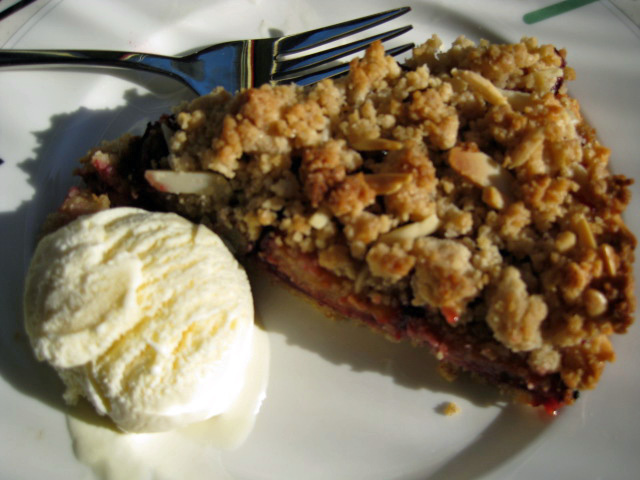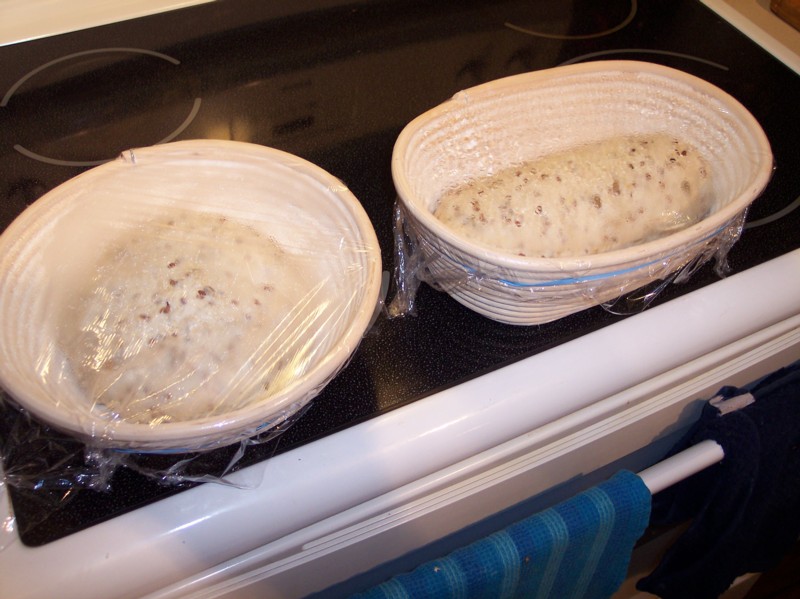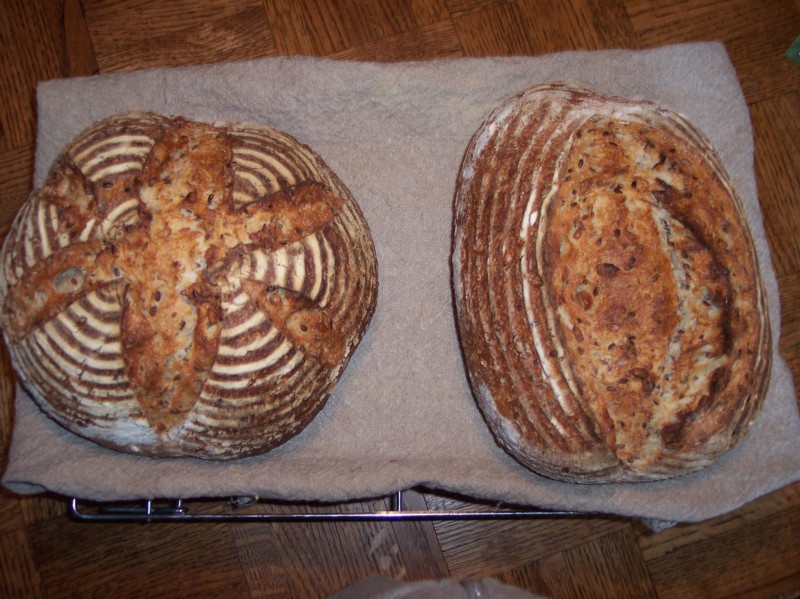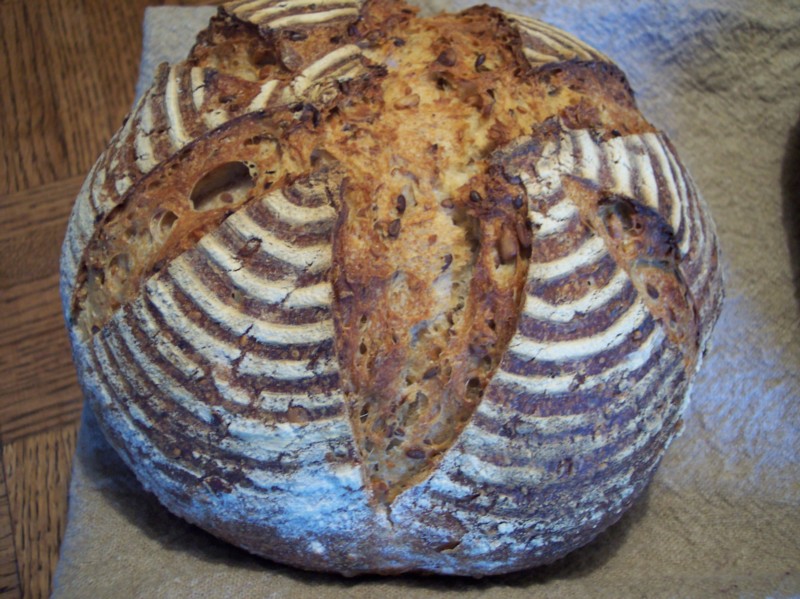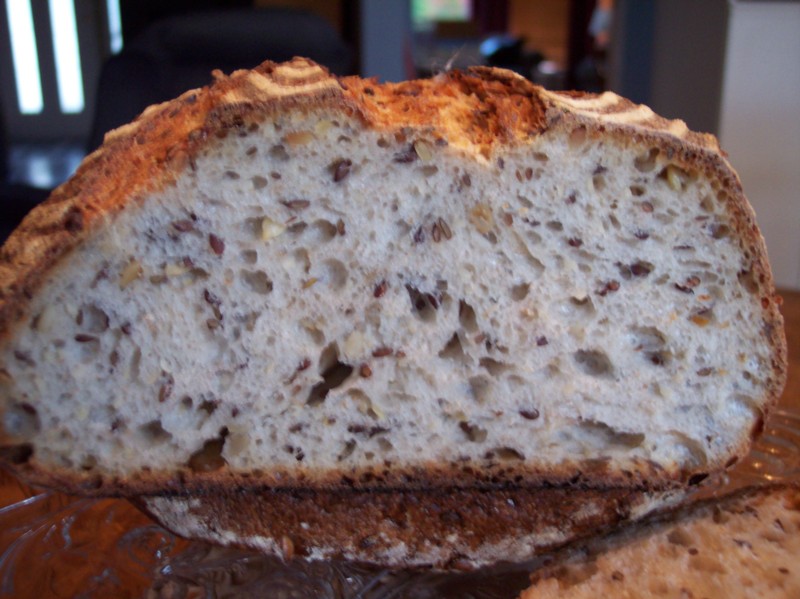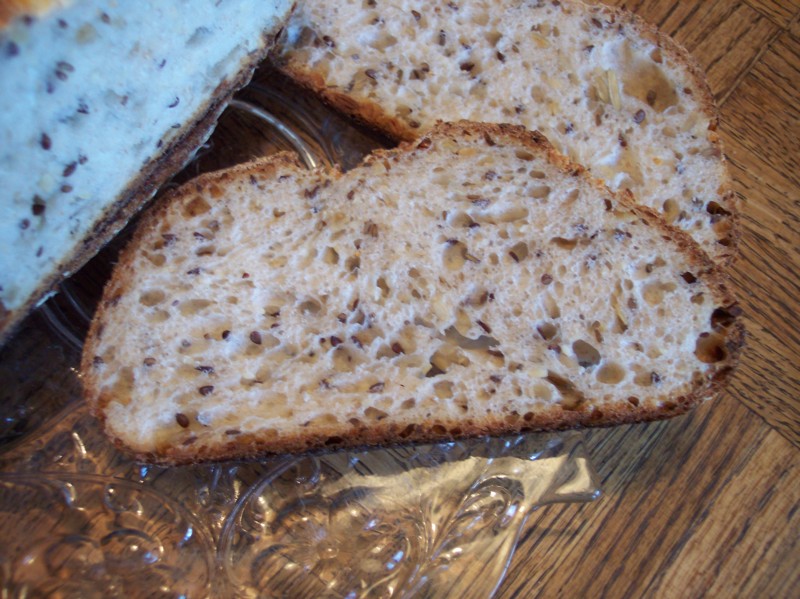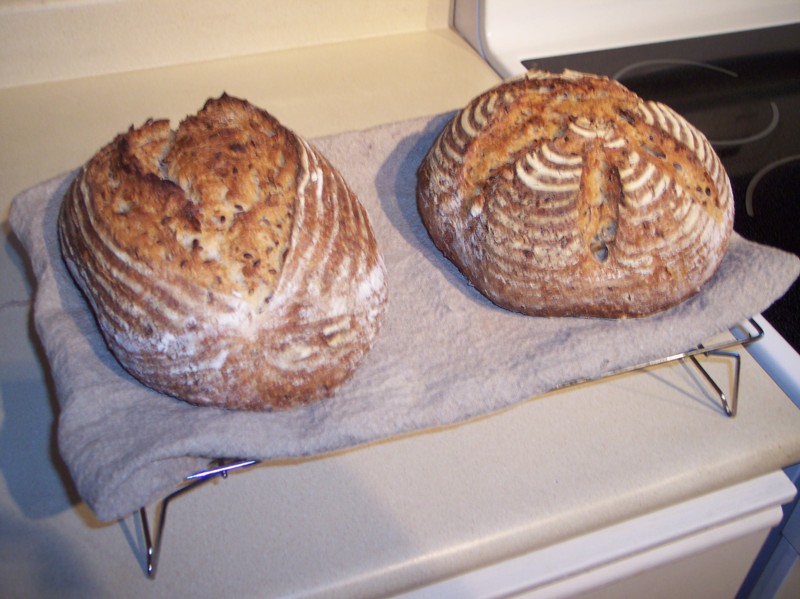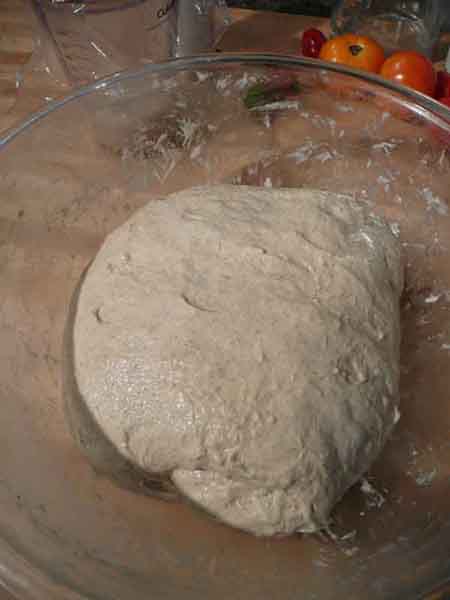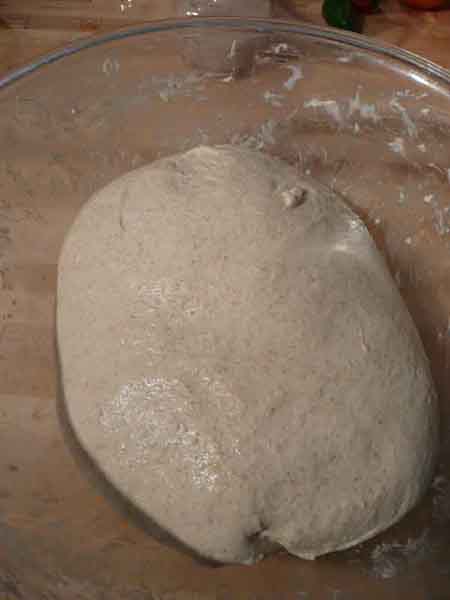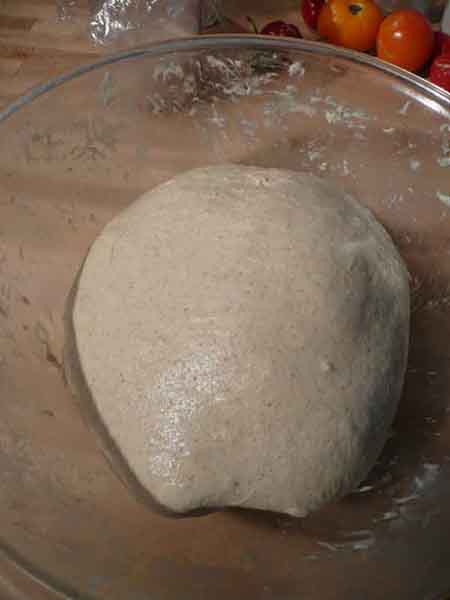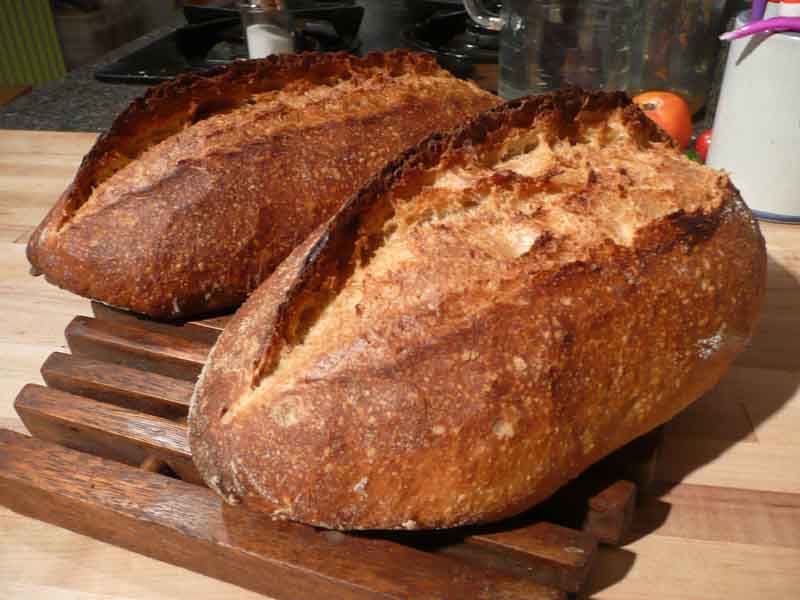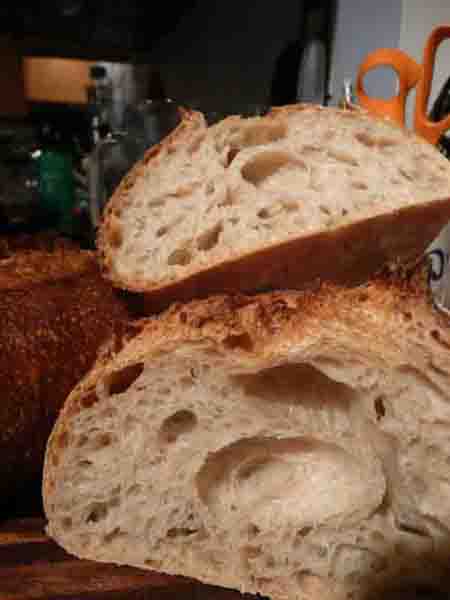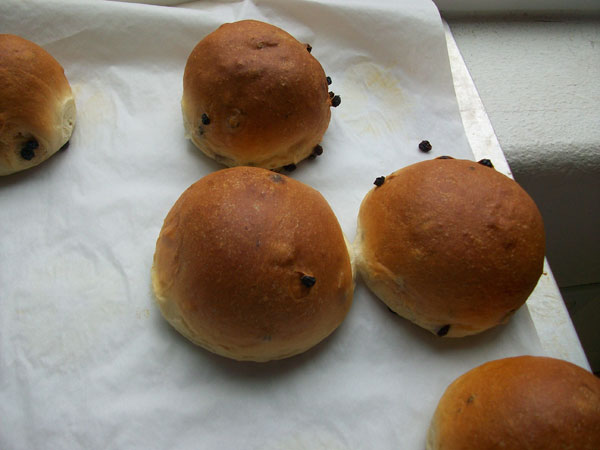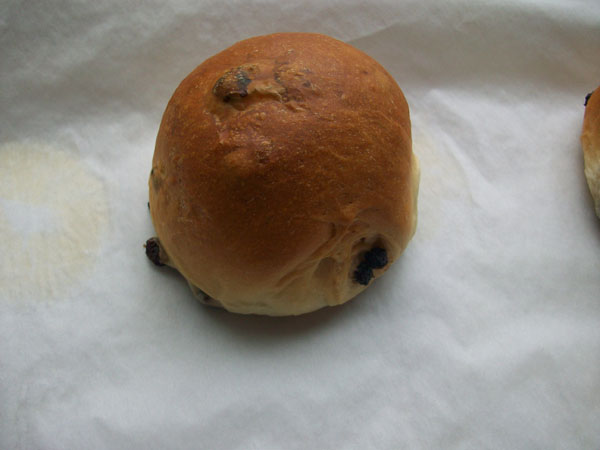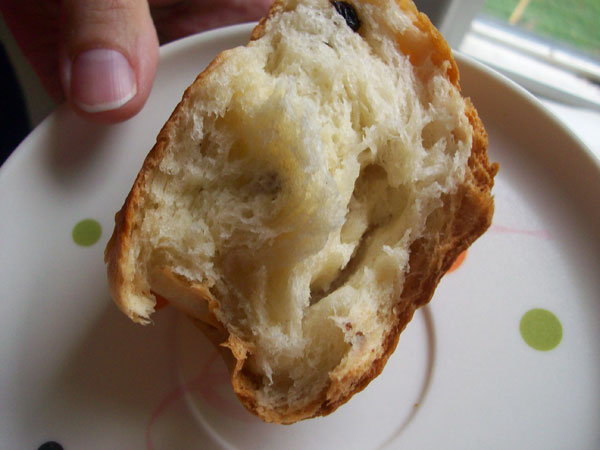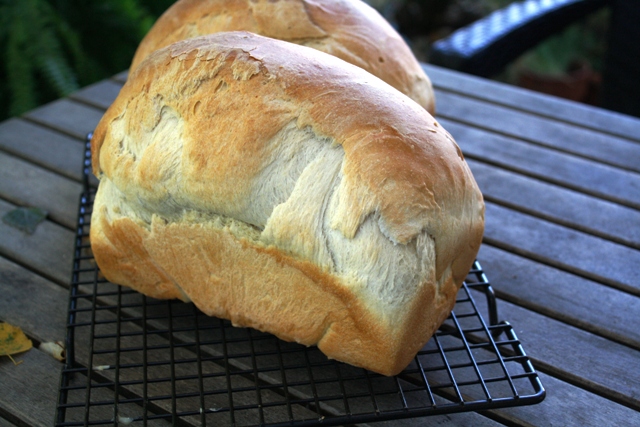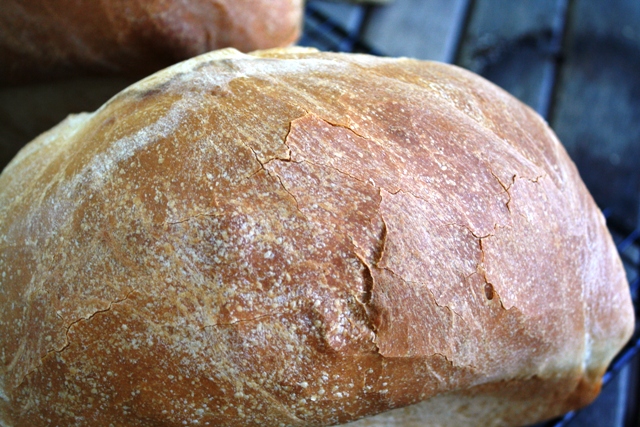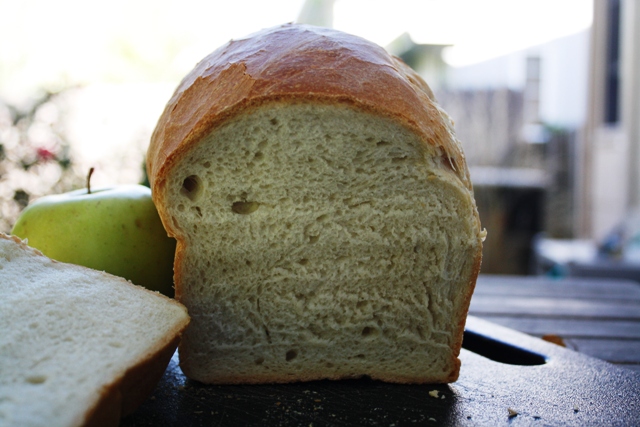
IBIE - Tuesday
After a martoonie or two and an early night, Tuesday 8:30AM found a very large crowd of bakers and imposters ready to listen to Craig Ponsford and Jeffrey Yankellow talk about the science and application of sourdough based pre ferments. Both seemed somewhat subdued and I was reminded of a quote about folks in another party town who made an early morning appointment. When they rolled into the restaurant for breakfast they remarked to the waitress that their counterparts were late and they could have used that extra few minutes to gently recover from the previous evening's festivities. The waitress said (to paraphrase) "You're in Las Vegas, boys, those people you are meetin' are expectin' a mess."
No, no, it was nowhere near that bad. In fact speaking about sourdough is always a little less precise than speaking about commercial yeast and I think most of us who work with sourdough know this.
What surprised me was the number of professional bakers at the lecture who had never worked with sourdough. Here on TFL it seems that "everyone" is a sourdough baker, but maybe not so much in the commercial baking world.
Again, there was a lot to the lecture, but there were some high points worth discussing.
Mr. Yankellow made a distinction between a "culture" - which he defined as a newly formed mixture of flour, water, and organisms and a "starter" ("chef" or "mother") that is a mature culture strong enough to use for baking. The transition, to his thinking usually takes 3 or 4 weeks (not many years) and, he emphasized, it is important to take the time to let the culture mature. He did discuss that a type of bread (similar to salt rising bread) could be made from a young culture, but he expressed that it would have a very strong taste (from all the random bacteria) and be a very heavy bread.
Then both Mr. Yankellow and Mr. Ponsford held forth on the myth of special sourdough starters being grown from grapes or raisins or any number of odd things. This is where I tread carefully because there is much emotional energy attached to the origins of starters. I'm just saying that both of these distinguished bakers were convinced that the yeasts in the flour used to feed the culture and later the starter will always be the yeasts (and bacteria) in the starter. Yeasts from grapes (for example) - and grapes are a fruit with a lot of yeasts - will not thrive in the flour and water environment and eventually be out competed by the yeasts in the flour. Mr. Ponsford told the tale of a starter that was grown in a wine cave that gave the bread a particular flavor - until it was removed from the cave. He also told the tale of a unique apple cider starter - but which was refreshed each day with apple cider. I'm not taking sides. I'm just saying.
Both similarly felt that after passing from the culture phase to the starter phase there is no advantage (in terms of actual bread making) to the "150 year old starter carried across the Rockies." They are both convinced that the starter will take on the characteristics of your locale and promised that if you went to their bakeries and asked for a bit of starter (now, don't everyone rush to do this!), they would gladly give you a piece because it will eventually come to reflect your locale and your level of care and itself was not the secret to their great breads. Again, I'm just saying what I heard.
They presented some fun facts, among which were:
- One gram of commercial yeast contains 8-10 billion yeast cells
- One gram of regular flour contains 13,000 wild yeast cells and 320 lactic bacteria cells, and
- One gram of whole-wheat flour contains 320,000 yeast cells and 62,000 lactic bacteria cells.
Now, that's something to think about...
Moving on the starter care, I couldn't help but think of the hard hearted way many home bakers treat their starters - leaving them to languish in refrigerator for weeks at a time and reviving them only when they are needed. Starter care as discussed was for professional bakers, as feeding suggestions were given for feeding once, twice, or three times a day.
Well, that stirred up some hard feelings. However I'll give you two quotes.
Craig Ponsford "There is no shortcut to caring for your starter" and Jeffrey Yankellow "Treat your starter right."
I don't have the qualifications to argue.
They both also emphasized consistency - claiming that every time you see a problem with sourdough, the issue is consistency (feeding routine, temperature, etc.)
I am not making this up. (Even though it is what I have been preaching on these pages for some time.)
In terms of the impact of sourdough on the final dough itself, they reminded us that the acid in the sourdough will strengthen the dough considerably and that more gentle mixing with the objective of somewhat under developing the dough would be something to consider with sourdoughs - allowing the dough to develop during the first fermentation. Mr. Yankellow expressed that he preferred to retard sourdough doughs after shaping as the acidity and long fermentation would strengthen the dough to the point where it would be difficult to shape.
Well, that's enough controversy for today.
I then toddled off to the Bread Bakers Guild of America booth to hear a presentation from a representative of the California Wheat Board. Apparently I've been studying about wheat a little too much, but one interesting fact is that California produces a particularly fine durum wheat called "Desert Durum" which is used in great quantities by the Barilla pasta company.
Swinging by the LeSafre cup, I was able to see yesterday's creations. I was quite impressed by Costa Rica's colorful artistic piece. Argentina's and Brazil's pieces were also very nice, but I did have to ponder if they would regret their bland color schemes. We will know tomorrow. Once again the breads were lovely. Although I am completely unbiased, I still think Team USA rocked - but this is one tough competition. I can't wait to find out the results.
Attracted by the sight of free dough scrapers, I spent some time at the Retail Bakers of America booth. This organization, whose website is www.retailbakersofamerica.org ,is an organization for professional bakers to aid them in connecting with other bakers and suppliers. Not an organization for most of us, but the very nice lady who chatted with me was happy to swap a mention for some plastic scrapers. We talked a bit about my "retirement business" and she gave me some very good advice about not spending my retirement on a bakery business (which I knew, but it was nice of her anyway.)
I'm beginning to enjoy this "resting up and not pushing myself to the limit" thing and so left the show early, blowing off the Ciril Hitz book signing. Although I like him very much because unlike "my teacher" he doesn't yell at me and doesn't give me homework assignments that take years to complete (he was also the first person to introduce me to a sheeter - and he even remarked to me about the love light in my eyes), but I just wasn't up to beating off the vast throngs that would no doubt be there. I also don't want to lose that air of "I'm so cool I can hang with famous bakers and never even consider getting a book signed or a picture taken." Once you give in to that, well, you lose your street cred. Anyway, I have a lecture with him tomorrow.
And I hear those martoonies calling (Hey! It's vacation!)
Happy Baking




